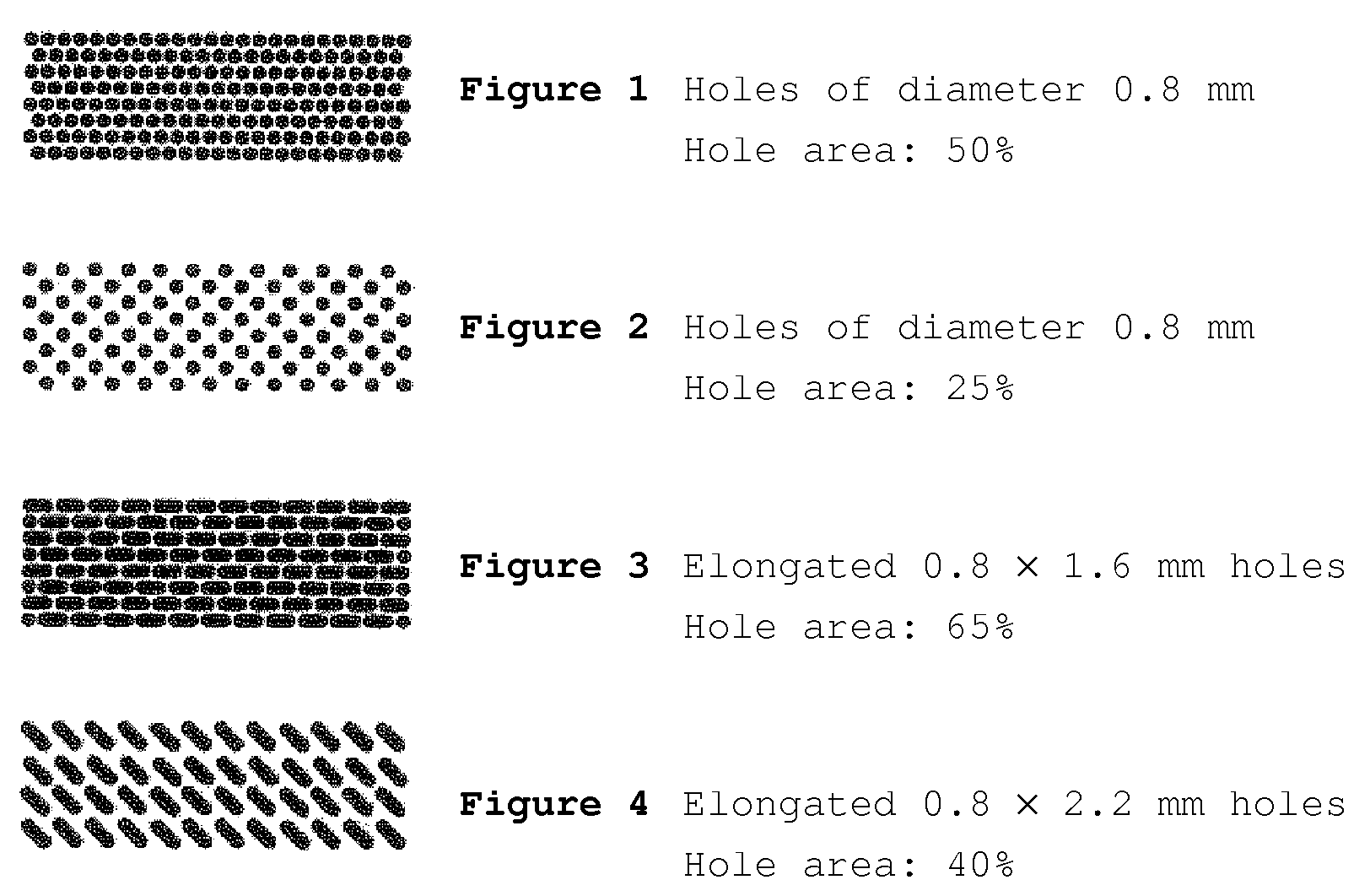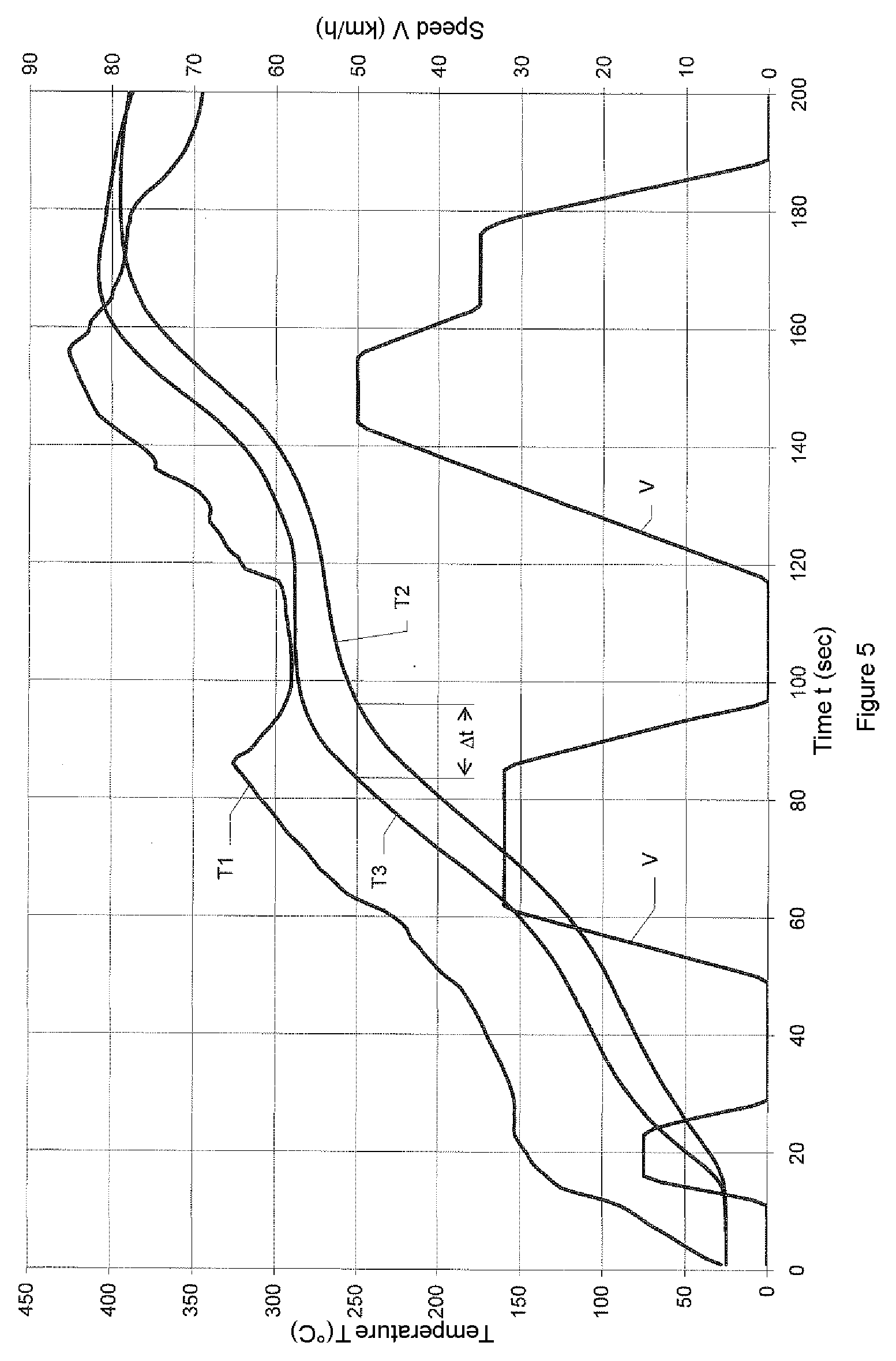Catalytic converter with improved start-up behaviour
- Summary
- Abstract
- Description
- Claims
- Application Information
AI Technical Summary
Benefits of technology
Problems solved by technology
Method used
Image
Examples
example 1
Comparative Catalyst (Catalyst A)
[0045]A cylindrical metal honeycomb composed of unperforated metal foils of 0.05 mm thickness, a diameter of 90 mm, a length of 74.5 mm and a cell density of 200 cm−2 was coated with a conventional three-way catalyst comprising platinum, palladium and rhodium with a noble metal concentration of 1.55 g / l of honeycomb volume.
example 2
Inventive Catalyst (Catalyst B)
[0046]For comparison of the catalytic properties, a further supported metal catalyst with the same dimensions, foil thicknesses and the same cell density as the comparative catalyst was produced. Instead of unperforated metal foils, however, an expanded metal with a stretching of 30% and a mesh length of 0.6, a mesh width of 0.5 and a strand width of 0.18 mm was used. The metal support was coated with the same three-way catalyst in the same concentration as the comparative catalyst.
[0047]FIG. 6a) shows a photograph of the structure of the expanded metal used prior to catalytic coating. FIG. 6b) shows a corresponding photograph after catalytic coating. It can be seen clearly that the mesh orifices of the expanded metal have been filled completely with catalyst material. The catalyst material adhered in an outstanding manner on the expanded metal and showed no detachment even in the case of blowing with compressed air and knocking.
Back Pressure Measureme...
PUM
| Property | Measurement | Unit |
|---|---|---|
| Length | aaaaa | aaaaa |
| Length | aaaaa | aaaaa |
| Fraction | aaaaa | aaaaa |
Abstract
Description
Claims
Application Information
 Login to View More
Login to View More - R&D
- Intellectual Property
- Life Sciences
- Materials
- Tech Scout
- Unparalleled Data Quality
- Higher Quality Content
- 60% Fewer Hallucinations
Browse by: Latest US Patents, China's latest patents, Technical Efficacy Thesaurus, Application Domain, Technology Topic, Popular Technical Reports.
© 2025 PatSnap. All rights reserved.Legal|Privacy policy|Modern Slavery Act Transparency Statement|Sitemap|About US| Contact US: help@patsnap.com



